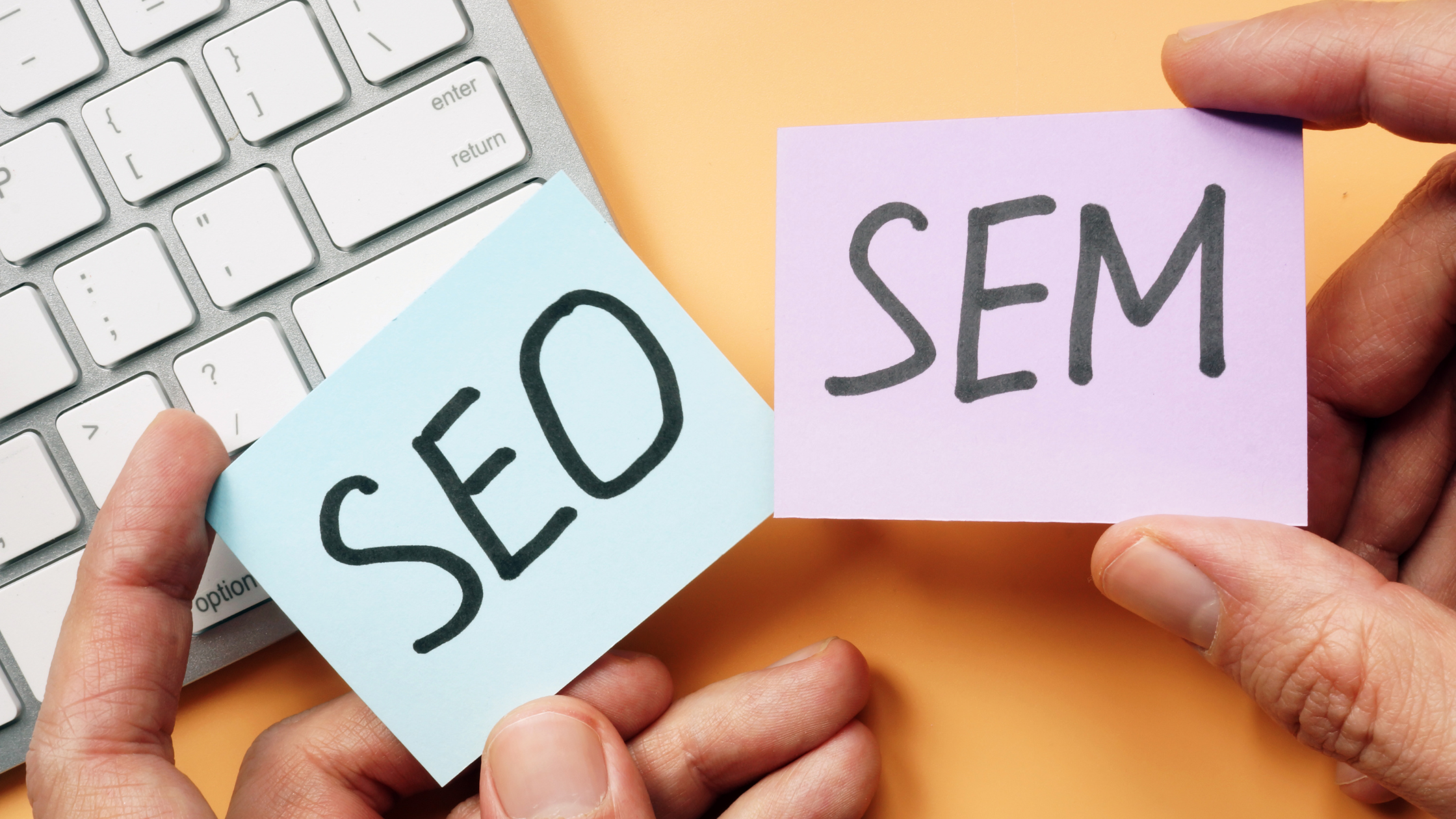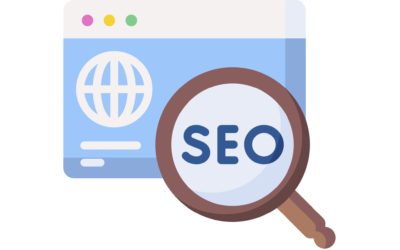SEO vs SEM: Which Strategy is Best for Your Business?
Businesses in the quickly changing digital landscape are always looking for methods to boost their online presence and draw in more clients. Businesses can reach their target audience with the help of search engines, especially Google. Search Engine Optimization (SEO) and Search Engine Marketing (SEM) are two of the most popular ways to use search engines. Although the goal of both tactics is to increase your website’s exposure in search engine results, their methods, prices, and outcomes are very different.
We’ll go into details about SEO and SEM in this article, examining both of its advantages and disadvantages to help you choose the approach that will work best for your company.
Understanding SEO (Search Engine Optimization)
The practice of improving your website to appear naturally in search engine results pages (SERPs) is known as search engine optimization, or SEO. Increasing the volume and calibre of visitors to your website through organic search results is the aim of SEO. SEO is a long-term approach that aims to make your website’s technical components, content, and structure better so that search engines can simply crawl, index, and comprehend it.
Components of SEO
On-Page SEO is the process of optimizing individual web pages to improve their search engine rankings and generate more relevant traffic. Important components consist of:
- Keyword Optimization: Finding and using pertinent keywords in your writing.
- Meta Tags and Descriptions: Create keyword-rich titles and descriptions to increase click-through rates.
- Content Quality: Producing excellent, educational, and captivating content that responds to users’ search terms.
- Internal Linking: Including internal links across your website to improve navigation and spread link equity.
Off-Page SEO refers to activities that are done outside of your website that have an effect on your search engine rankings. Key features include:
- Backlinks: To increase your domain authority, obtain high-quality connections from reliable websites.
- Social Media Signals: By increasing traffic and interaction, social media shares, likes, and mentions can have an indirect impact on SEO.
- Guest Blogging: Creating things for other websites that includes backlinks to your own website contributes to authority building.
Technical SEO is the process of upgrading the technical features of your website so that search engines can crawl and index it more easily. Key areas include:
- Site Speed: Making sure your website loads quickly.
- Mobile-Friendliness: Ensuring that your website is optimized and responsive for mobile users.
- Secure (HTTPS): Making sure your website is secure and using HTTPS.
Local SEO is the process of making your company more visible in local search results, which includes maintaining reviews and improving Google My Business listings.
Benefits of SEO
- Cost-effectiveness: Unlike SEM, SEO does not require payment for each click or impression. You can receive a consistent flow of organic traffic without constant investment after you rank highly.
- Long-Term Results: SEO is a long-term approach. You can sustain those rankings with persistent SEO efforts after your website is improved and begins to rank.
- Credibility and Trust: People tend to view websites that show up in organic search results as more reliable than those that have sponsored advertisements.
- Sustainable Traffic Growth: SEO has the potential to increase website traffic in a steady, long-term manner.
Limitations to SEO
- Time-Intensive: It may take several months before you notice noticeable gains in your rankings because SEO takes time to generate results.
- Algorithm Changes: Because search engine algorithms are always changing, your rankings may also change.
- Competitive: In highly competitive businesses, ranking well requires significant work and commitment.
Understanding Search Engine Marketing (SEM)
Search Engine Marketing (SEM) is a broad phrase that includes both SEO and paid advertising, however it is frequently used interchangeably with Pay-Per-Click (PPC) advertising. Ads that show up at the top of search engine results pages (SERPs) for particular keywords can be purchased using SEM. Google Ads, formerly known as Google AdWords, is the most widely used SEM platform.
Businesses use SEM to bid on keywords, and when users use those phrases in their searches, advertisements show up in the sponsored area of the search results. It’s called Pay-Per-Click, or PPC, since you pay each time, a user clicks on your advertisement.
SEM components
- Keyword Research and Selection: SEM, like SEO, focuses on targeting the appropriate keywords. To make sure your advertising shows up for those search terms, you bid on keywords in SEM.
- Ad Creation: You must create eye-catching advertisements with a powerful call to action (CTA) and the target keywords. With Google advertisements, you can make shopping advertisements, display ads, text-based ads, and more.
- Bidding: SEM uses a bidding system in which you determine the price you are prepared to pay for each ad click. Better ad placement is usually the outcome of higher bids and more pertinent ads.
- Landing Page Optimization: How well your advertising perform on the landing page is another factor that affects how successful your SEM campaigns are. In addition to being pertinent to the user’s search purpose, the landing page should be optimized for conversions.
- Campaign Management: SEM involves continual management to alter bids, test ad text, target new keywords, and analyse performance metrics like CTR and CPA.
Benefits of SEM
- Instant Results: Following the launch of your campaign, SEM, in contrast to SEO, can offer instant visibility in search results.
- Highly Targeted: To make sure your advertisements are seen by the correct people, you can target particular keywords, regions, demographics, and even times of day.
- Measurable Outcomes: SEM gives you accurate information on clicks, impressions, conversions, and expenses, which enables you to gauge how successful your campaigns are.
- Scalable: Depending on your budget and business objectives, you can easily scale up or down SEM campaigns.
- Ad Placement Control: You have the ability to decide which keywords will display your advertising and where they will appear in the search results.
Limitations of SEM
- Expensive: SEM may get pricey, particularly in markets with significant cost-per-click (CPC) competition.
- Short-Term: Your visibility vanishes right away if you stop purchasing advertisements. SEM offers immediate benefits but no sustained advantages.
- Complexity: Effective management of SEM campaigns demands a solid grasp of data analysis, ad copywriting, and bidding tactics. Businesses with no prior experience may find it intimidating.
A Comparative Analysis of SEO and SEM
After learning the essential elements of SEO and SEM, let’s evaluate them in a number of important areas to help you decide which is best for your company.
Cost
- SEO: Since you don’t have to pay for each click, SEO is an economical tactic. It does, however, necessitate a time and effort commitment, as well as the potential for expert SEO service outsourcing. In addition, there are hidden expenses associated with technical SEO, link development, and content production.
- SEM: Since you pay for each click or impression, SEM involves direct expenditures. Costs can increase dramatically in businesses with intense competition, making SEM a more expensive choice over time.
Which should you choose?
SEO could be a preferable option for companies with limited funds because it provides long-term advantages without requiring constant advertising expenditures. SEM, on the other hand, is best if you can afford the visibility and need results immediately.
Speed of Results
- SEO: This is a long-term approach. If you’re in a highly competitive industry, it can take times before you see noticeable benefits.
- SEM: SEM produces results immediately. You can begin getting clicks and traffic as soon as your advertising campaign goes live.
Which to Choose?
SEM is the best option for businesses that require instant visibility. However, SEO will eventually produce better long-lasting results if you’re intending for long-term growth and have the patience to wait.
Sustainability
- SEO: SEO provides results that last. You won’t have to pay to keep driving traffic once you’ve built a solid organic presence.
- SEM: Unless you keep spending money on advertisements, SEM is not long-term viable. Your visibility vanishes as soon as you cease making payments.
Which to Choose?
The obvious winner in terms of sustainability is SEO. SEM works well for campaigns that are brief or to support your organic efforts.
Click-Through Rate (CTR)
- SEO: Compared to sponsored advertisements, organic results typically have greater click-through rates. Organic listings are trusted by many people more than paid content.
- SEM: Because people frequently choose to click on organic results, paid advertisements typically have lower CTRs. SEM advertisements can still be effective, though, if they are optimized with strong copy.
Which to Choose?
When it comes to long-term CTR, SEO dominates. However, with a carefully planned ad campaign, SEM can deliver concentrated traffic.
Trust and Credibility.
- SEO: Users tend to view organic listings as more reliable. A website with high ranks can be seen as a reliable source of information.
- SEM: Users who are aware that companies are paying for visibility can view paid advertisements with some suspicion.
Which to Choose?
SEO is a superior choice if your company values credibility and trust. Although it doesn’t provide the same degree of trust, SEM can still be effective for lead generation and brand exposure.
Using SEM and SEO Together: A Hybrid Strategy
Although each has distinct benefits and drawbacks, SEO and SEM are not unique of one another. Many companies find that a hybrid strategy that combines the advantages of both approaches performs best.
How to Use SEO and SEM together
- Start with SEM for Instant Results: While your SEO efforts are still building, start SEM campaigns to generate visitors immediately.
- Use SEM for Testing: SEM lets you evaluate which keywords generate the most traffic and conversions in a short amount of time. This information might help you focus on the most lucrative keywords and guide your SEO strategy.
- Increase Organic Results with Paid Ads: SEM can help you get more visitors even if your SEO efforts are producing positive results. This is especially true for competitive keywords where organic ranks might take some time to reach.
- Dominate the SERPs: You may hold several positions in the SERPs by using both SEO and SEM. Regardless of whether people prefer sponsored advertisements or organic results, this improves your chances of receiving clicks.
Which Strategy is Best for Your Business?
The choice between SEO and SEM ultimately comes down to your company’s objectives, financial constraints, and schedule.
- If you want to gain your audience’s trust, have the time to invest in increasing your organic visibility, and are committed to long-term success, go with SEO.
- If you have the funds for paid advertising, need results immediately, and are executing campaigns or promotions with a tight deadline, go with SEM.
To increase your presence in search engines, it’s often preferable to combine SEO with SEM. You can create a comprehensive search marketing plan that produces results and supports the success of your company by striking a balance between immediate profits and long-term expansion.
Wrapping it Up:
In digital marketing, both SEO and SEM are essential and have their advantages. SEO provides long-lasting, reasonably priced outcomes that gradually increase credibility and trust. SEM offers highly focused traffic and instant visibility, but maintaining those benefits calls for ongoing commitment. You can choose the approach that best matches the requirements of your company by being aware of the advantages and distinctions between each one.
In the end, adaptability is the secret to search engine marketing success. Whether you choose with SEO, SEM, or a mix of the two, you need to make sure your company keeps growing and thriving in the cutthroat digital market by continuously tracking and tweaking your strategies depending on results.





